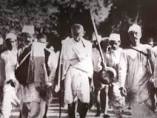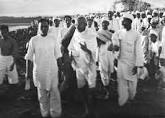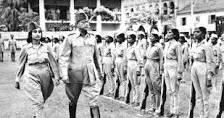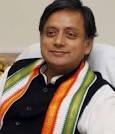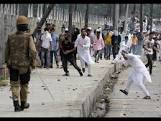Copyright@shravancharitymission

THIS UNQUIET LAND
(STORIES FROM INDIA’S FAULT LINES)
By Barkha Dutt
(Published in 2016)
Publisher: Aleph
Khidki (Window)
–Read India Initiative—
This is only an attempt to create interest in reading. We may not get the time to read all the books in our lifetime. But such reviews, talk and synopsis will at least convey what the book is all about
There is an old saying. ‘A reader lives a thousand lives before he dies. The man who never reads lives only once.’ I think the saying fits in quite well in this case as you’ll come across many lives in this book.
Barkha began working in 1994 for a news show that was originally broadcasted on Doordarshan. Her entry into journalism coincided with the birth of private TV. But, then, why this book all of a sudden? Showcasing India’s fault lines that runs deep and wide. Some of them even go back, centuries. The book is some three hundred plus pages. Where, she has selected certain topics, that have been haunting India for quite some time now. And these topics have even besmirched India’s reputation abroad. Basically she has handpicked issues that she came across during her career as a journalist. And around those issues the book spreads like a Banyan tree, but without any storyline. Hence it is difficult to summarise or even write a synopsis. However, what I’ve attempted here for you is, the trait of the book. Along with its central points that will give a sense of what the book is all about.
The book spins around issues and the issues spin around Barkha. It has a gamut of aspects—starting right from her childhood, including parents, education, career, enthusiasm and even frustration. But most of the time … it is India’s helplessness. So, not a very superlative narrative for the country I would say. But I guess it can’t be helped. Because, for most journalists the uncompromising tenet is to first broadcast the negatives comprehensively, and beyond that if the time permits a few positive outlines too. Remember by broadcasting achievements you don’t get as many eyeballs as you get by broadcasting disasters. To substantiate the point Barkha quotes a VIP who says—‘India is a country that moves from headlines to headlines.’ Of course sensational ones.
The central theme of the book perambulates around, the last hundred years of India. One could call it the not-so-recent as well as the recent events of India. But then, while cruising through the book one does get a stale feeling, as if you’re zipping through some old newspaper columns or an old magazine article in staccato effect. Certain pages get you a feel as if you’re negotiating a long prose, though well described but high on verbosity. And what really keeps you charged during such narrations, are things that you don’t know, and that too, within what you know and also what goes on behind the scene. Many of us know a lot about the Kargil war through electronic and print media. Yet, we may not know, how important a role, late Mr Brajesh Mishra played in solving the crisis. Or we may have heard about Bhanvari Devi rape case in Rajasthan. But we may not know that ‘Bhanvari Devi’ was the starting point in the rape history of India where the other end was ‘Nirbhaya.’ The title covers the following chapters. Where, each chapter appears to be a short book in itself.
PLACE OF WOMEN: the chapter is almost like the rape history of modern India. The description below is about Bhanvari Devi and how ghastly.
‘Post rape: ‘Back at the police station, she was asked to strip and leave her ghagra behind as evidence. It was past midnight when she made her way home draped in the thin cloth of her husband’s turban.’ she picks the narration from Bhanwari Devi rape case of Rajasthan and links it up with Nirbhaya.
In between, the lady author also spreads across to other rape cases, that had figured in various headlines during all these years. At times the narration appears as a memoir with a lot of emphasis on the sufferings of Indian women vis-a-vis the unceasing tyranny of the Indian men. Something, that is even otherwise known to most Indians. But then she doesn’t really relay any out-of-the-box suggestions, to at least dampen the malaise. She gives a good account of a lady journalist. Problems she faced while commencing her career. And in all of that, she juggles quite well with the words but the content doesn’t seem to be very uncommon. In certain pages sentences are long. But then they are vivid and to the point. The book has a tilt towards feminism which is quite obvious.
It’s high on lexicon for an average reader, who might have to Google more often, to keep cruising. Therefore, the target audience is clearly the elite. But shouldn’t books with such historical sparks be, in easy read format? She has dug out some exhaustive statistics on females of India, especially, working women, and their sexual harassment.
The book has a striking hard cover. The title is appropriate and gets further substantiated by a pin pointing sub title that says—STORIES FROM INDIA’S FAULT LINES. It is well presented in terms of font and flow. But it is still not a very moving book. As it swings between, diverse chapters and the personal memoir and does not have a linear penetrating plot. And it goes on and on. Sure intermittently it has interesting frills. As a messenger she has reported the happenings in the most erudite style, but has not presented too much of her own view points. She also touches upon the Gulabi gang of Uttar Pradesh that once operated in full flow. At places the narration is quite pungent when you compare it with the topic. Chapter deals with women’s issues, especially rape where it also cites three other cases. But then there are no incites or suggestions to solve the menace. She also goes on to describe the methodology of women politicians and about the callousness of women officers who are not sensitive to women’s cause. Superwoman versus supermom is comparison she draws quite artfully.
THE COST OF WAR
This chapter by and large takes you through the sad tale of Kargil War. During the war Barkha was often seen near the the LOC. It was well covered by the channel she was working for, then. I’m sure. She must be carrying evocative memories about it. Such memories don’t die. Rather, you carry them to your grave. In this chapter, she even goes on to describe the role of Brajesh Misra, principal secretary and national security advisor to Prime Minister Atal Bihari Vajpayee in quite a detail, which you won’t come to know unless you read the book. She even elucidates the role that the diplomats of India played in bringing the war to an end, together with the balancing act of the US. She throws up some good war statistics. But she could have vented her views more ferociously. The chapter has a lot of stuff from ground zero.
It fleshes out some good war statistics. It also hazily talks about gun configurations. The chapter explicates extensively, about the various wars with Pakistan and even the border skirmishes with China. She mixes the blend of her career and the Kargil war quite efficiently. For the general public doesn’t know what all goes on behind the scene and this is where she makes a killing. Excellent and moving description about martyr’s cremation.
The sentence that moved me was, ‘And so in Kargil without snow shoes or proper high-altitude gear, Vishal and other first-time troops literally crawled their way up to peaks as high as 18,000 feet, where the temperature slipped to as much as ten degrees below zero to fight for the honour of their platoons and regiments.’
TERROR IN OUR TIME
The chapter covers the gory parliament attack of 2001. It also gives a good account of, the history of terrorism in modern India. In this the lady author covers selected terrorist attacks. She gives a wide coverage of 26/11 Mumbai attack, describes Ajmal Kasab’s episode in detail. And how, in that moment of disaster, communities come together in Mumbai’s Zaveri bazaar. Narration is good and content is extensive. She also sketchily talks about farmer’s suicide. As a true messenger she reports whatever is happening in India. She talks about various issues without any solutions. Then she goes all over and even touches upon Sheena Bora murder case in page 95. She then even adds Samjhauta express and Malegaon blasts. A lot of it is the same and reverberates in your mind as news items of those times. But yes there are some finer points too, which were kept under the carpet, which is interesting. ‘Extremism is a bigger threat than terrorism’ she hears from another VIP.
But in the ultimate analysis I would ask. If such books even reach the think tank of the dispensation to act upon, or they just get into their personal libraries and sit their as literary accolades. She further makes an important point–200 districts have Maoist movement—India’s red corridor. Where, she richochet’s some good statistics. And gives a good hidden perspective of India, overall.
IN THE NAME OF GOD
She covers Gujarat riots together along with with the rapes that happened in 2002. A lot of it is a recount of recent history. How kar-sewaks were murdered and Muslims were massacred as a consequence of that. But she nowhere blames the media for reporting inflammable stuff. Rather she rarely points a finger at the media. She covers Gujarat riots in great detail but has less to say about the sentiments of the relatives of the kar-sewaks who were murdered in Godara. The narration appears as catchy news reports without author’s own modulation. She talks about the strong points of Indira Gandhi. She covers Babri Masjid demolition too. And compares the trinity– Narsimha Rao, Rajiv Gandi and Rahul Gandhi
A CHRONICLE OF KASHMIR
Barkha mentions the minute India released Maulana Masoor Azhar, Omar Saeed Sheikh and Mushtaq Ahmed on 31.12.99 for hijacking IC-814 India turned into a soft state. Farooq Abdullah who was then the Chief Minister of J&K vehemently protested this. She narrates further, ‘the minute we gave in, India became a soft state; an apoplectic Farooq Abdullah, who was chief minister of Jammu and Kashmir during the hijacking of IC-814, would tell me later. He phoned L.K. Advani, the then home minister, to vehemently oppose the release of terrorist.’ … She doesn’t hesitate in exposing India’s weakness. Then she covers the 1st suicide attack of the valley. Even harps about countries spreading terrorism, such as Pakistan and Afghanistan. She of course has a lifelong obsession about J&K and doesn’t forget to talk about Nehru’s background and the birth and growth of JKLF. An interesting point that she makes is:
‘A month later in September, the prevaricating Maharaja Hari Singh made an offer of accession to India for the very first time. Nehru stunned him by making the deal conditional on the release of Sheikh Abdullah from jail. The maharaja refused.’ She also goes on to describe Patel’s conversation with Nehru. And of course she has described J&K’s constitutional history quite well and has also dealt with the malaise of Kashmir in detail.
OF POLITICAL DYNASTS, JUGGERANUTS AND MAVERICKS
The chapter is full of anecdotal tales which the readers would love reading. It covers lady author’s encounter with various national and international leaders and even there close relatives. Where, it starts from Priyanka, Raga (Rahul Gandhi) and even Robert Vadhra. Barkha is curt and brusque when she wants to be. She compares Modi with Gandhis only to say, ‘Modi was determined to overthrow the political royalty of the Gandhis. He was a citizen who had come to take the kingdom.’ She disparages Raga, who had the luxury of several years of authority without any responsibility. But he neither became a minister in the government nor took charge of the party.
She then goes on to describe the sum and substance of Arvind Kejriwal and at one point even draws a comparison between him and Raga. Both are youthful men, in their early forties—where, Arvind is acutely educated, and has a self achieved track record.
Another interesting point that she makes is about Indira Gandhi under whose leadership Congress as an institution collapsed. She then spreads across to various political leaders of India and their parties. Her description about Mani Shankar Aiyar is engrossing. And there is a good compilation of political barbs. And of course how could she leave out Dr Manmohan Singh. L. K. Advani couldn’t have been left out either with his stories about Babri Masjid and his visit to Jinnah’s grave.
The interesting comparision she draws is in between the ‘Chaiwala’ and the ‘Mufflerman’ (Namo and Arvind Kejriwal). Talks about ‘Achhe Din’ and ‘Make in India.’
She opines about Modi, ‘I have always felt, in the many years that I have observed him, that Modi’s ambitions are personal not ideological.’
I personally feel her overexposure to the affairs of Pakistan and Kashmir in some ways narrowed her journalistic prowess. She got branded. And that reflects in the book also. But then exposure is not always in your hands. She covers Nawaz Sharif and his delegation in the US, and his calling Manmohan Singh a ‘Dehati Aurat.’—that she clarifies.
She talks about AAP party at length and the anti corruption movement.
A SOCIETY IN FLUX
This chapter flows all over. It has no direction or plot. Whatever she felt … she has written about. And is quite a contrast to the previous chapters. I guess she wanted to close the book now. India is prone to disasters, so she talks about the Nagapattinam Tsunami of 2004, in Tamil Nadu which she had covered. She describes Ambedkar’s conversion ceremony to Buddhism. Where, she doesn’t forget to remind what Mahatma Gandhi had to say about conversion
‘I am against conversion, whether it is known as shuddhi by Hindus, tabligh by Mussalmans, or proselytizing by Christians.’
Then she covers certain topics that had made it to the headlines. She of course digs into the history of India and fetches out things she had not come across in her career. She describes the pliant middle class of India. Talks a bit about the Modern School, where she had studied. Remembers, the Mandal agitation of 1992, and also brushes past IPL, Sunanda Pushkar and even Lalit Modi.
Overall, a valuable read. Only if you’re interested in knowing how India operates or rather how the government of the day operates.
*****
Synopsis by Kamlesh Tripathi
*
https://kamleshsujata.wordpress.com
*
Share it if you like it
*
Shravan Charity Mission is an NGO that works for poor children suffering from life threatening diseases especially cancer. Should you wish to donate for the cause. The bank details are given below:
NAME OF ACCOUNT: SHRAVAN CHARITY MISSION
Account no: 680510110004635 (BANK OF INDIA)
IFSC code: BKID0006805
*
Our publications
GLOOM BEHIND THE SMILE
(The book is about a young cancer patient. Now archived in 7 prestigious libraries of the US, including, Harvard University and Library of Congress. It can also be accessed in MIT through Worldcat.org. Besides, it is also available for reading in Libraries and archives of Canada and Cancer Aid and Research Foundation Mumbai)
ONE TO TANGO … RIA’S ODYSSEY
(Is a book on ‘singlehood’ about a Delhi girl now archived in Connemara Library, Chennai and Delhi Public Library, GOI, Ministry of Culture, Delhi)
AADAB LUCKNOW … FOND MEMORIES
(Is a fiction written around the great city of Nawabs—Lucknow. It describes Lucknow in great detail and also talks about its Hindu-Muslim amity. That happens to be its undying characteristic. The book was launched in Lucknow International Literary Festival of 2014)
REFRACTIONS … FROM THE PRISM OF GOD
(Co-published by Cankids–Kidscan, a pan India NGO and Shravan Charity Mission, that works for Child cancer in India. The book is endorsed by Ms Preetha Reddy, MD Apollo Hospitals Group. It was launched in Lucknow International Literary Festival 2016)
TYPICAL TALE OF AN INDIAN SALESMAN
(Is a story of an Indian salesman who is, humbly qualified. Yet he fights his ways through unceasing uncertainties to reach the top. A good read not only for salesmen. The book was launched on 10th February, 2018 in Gorakhpur Lit-Fest. Now available in Amazon, Flipkart and Onlinegatha
(ALL THE ABOVE TITLES ARE AVAILABLE FOR SALE IN AMAZON, FLIPKART AND OTHER ONLINE STORES OR YOU COULD EVEN WRITE TO US FOR A COPY)
*****











